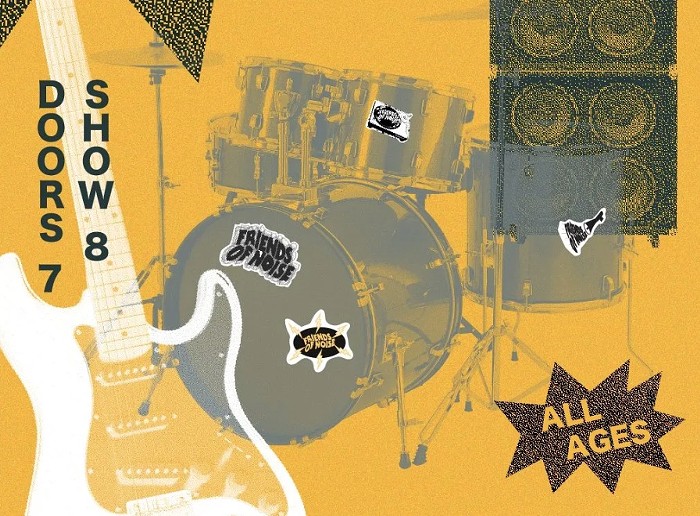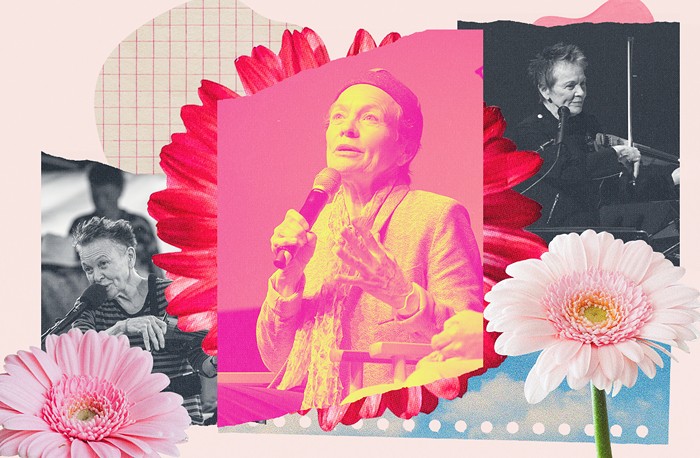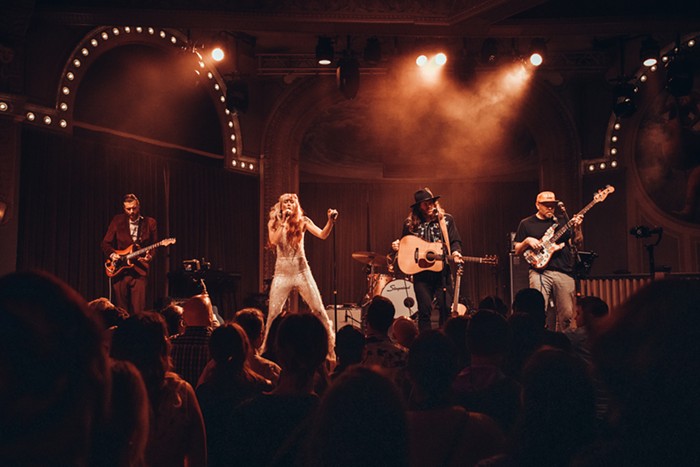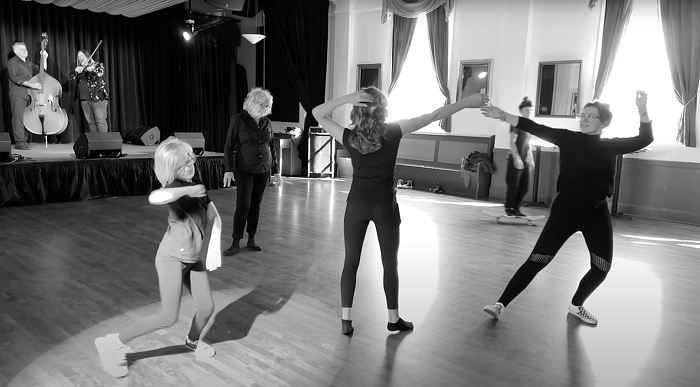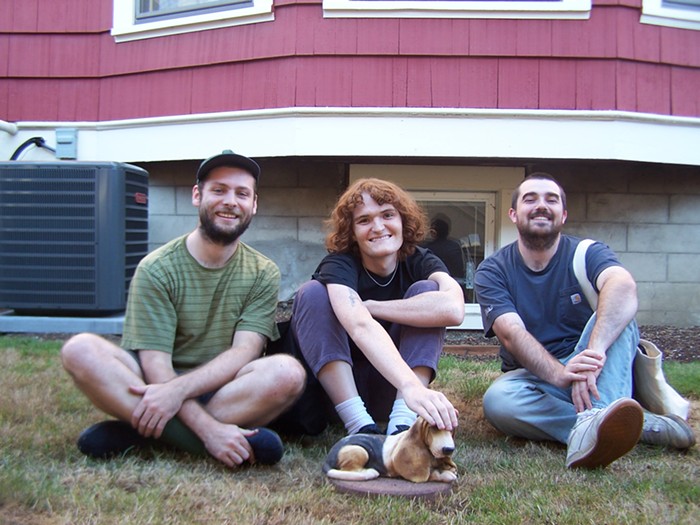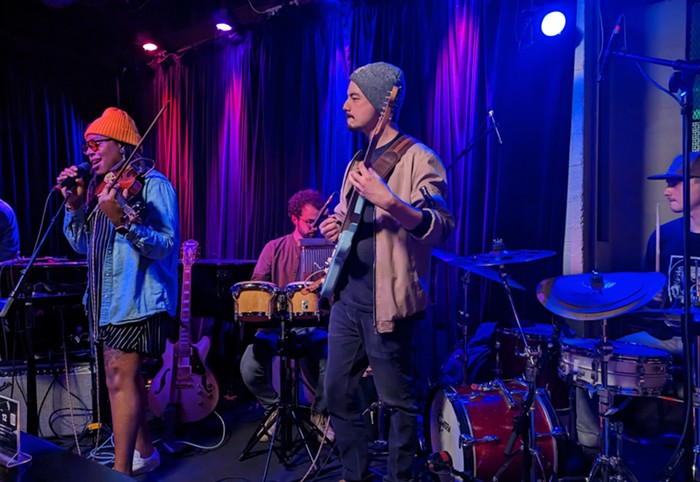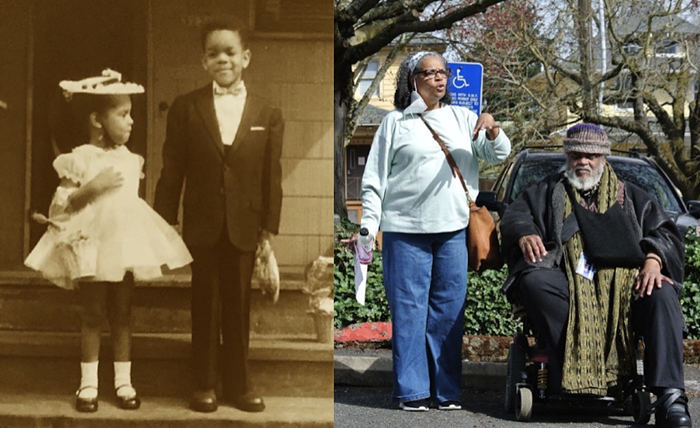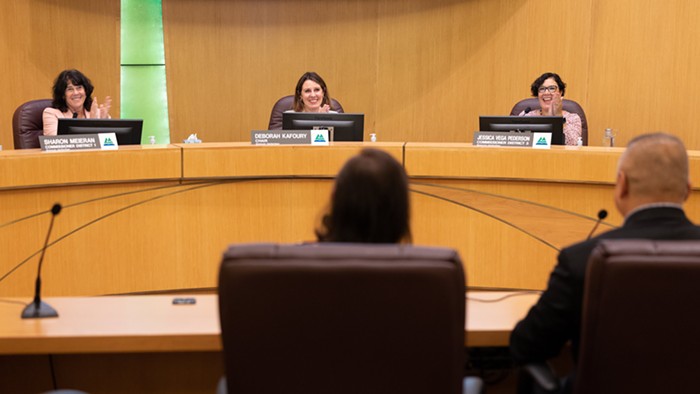“If you don’t like the way it’s mixed, just don’t talk to me about it. Because I will murder you. I will—I’ll murder you in your sleep.”
It’s early afternoon in mid-August, and Angel Olsen is wandering through her home in the picturesque artist’s hamlet of Asheville, North Carolina. The St. Louis native sounds relaxed and incapable of killing anyone as she breezily recounts childhood piano lessons, her parents’ love for country crooner Roger Miller, and memories of punk shows at her hometown’s dearly departed DIY venue, the Creepy Crawl. “My mom would give me a flip phone to call her, so she could pick me and my friends up. If you drove down there, your car would get broken into,” she laughs.
Olsen’s murder threat was actually delivered to her band, during the frantic final push to finish 2016’s My Woman. The record underwent multiple mixes, and she was often delivering feedback—“Stuart’s guitar needs to be on the right! Seth’s guitar needs to be on the left!”—over the phone while she was out on the road. It was a grueling process, and while the 31-year-old singer/songwriter wanted to hear everyone’s perspective, she was the one running in front of the train saying, “They’re not Angel Olsen, they don’t have to have final say.”
At that point, being Angel Olsen was stressful enough that she was barely eating or sleeping—but her agonizing was undoubtedly worth it. Because in a year packed with high-profile releases from heavyweights like Radiohead, Beyoncé, and David Bowie, Olsen’s third studio effort landed on every year-end list that mattered.
My Woman departs dramatically from Olsen’s previous releases, like 2011’s Strange Cacti EP and 2014’s Burn Your Fire for No Witness, which wholly embrace the austere aural aesthetic of—as she describes it—“the sad girl shit.” Curiously, there was no grand plan to make a seismic shift for the sessions. “I think I just needed a break,” she explains, and says that the bigger sound of My Woman grew from wanting to capture the energy of the band’s informal jams.
Listening to it now, there’s nothing she’d change—almost. “Though my voice, and drums and guitars sound really big on tape, when you’re playing quietly, sometimes you just hear the tape,” she reflects. “Sometimes that doesn’t bother people, but I don’t know... it’d be nice to not hear it, and it kind of bugs me a little bit.” While she poured everything she had into My Woman, two years after its release, she still sounds surprised about the record’s rapturous reception.
“People said, ‘So you created a pop record,’ and I was like, ‘Did I?,’” she laughs, pointing out that two tracks are more than seven minutes long. For a brief second, she toys with exploring the whole concept of pop, before admitting, “When something’s popular and people like it, I guess that makes it a pop record. I don’t know what people are listening to.”
Pop or not, there’s nothing sparse about the arrangements on My Woman. Even the quiet moments feel rich and robust, and every element is polished to a high luster. On “Intern,” the opening track, her vocals are delivered against a backdrop of soothing synth tones, while “Not Gonna Kill You” is propelled toward its climax by impassioned interplay between acoustic and electric guitar. The soaring, cinematic “Shut Up Kiss Me” sparkles as brilliantly as the chrome wig she sports in the accompanying music video and climbs toward an emotional peak you’d have to be inanimate to resist.
Along with all the critical praise, and hearing it described as “pop,” Olsen was also struck by another aspect of her album’s reception: “When My Woman came out, everyone wanted to attach some sort of feminist meaning to it, or they wanted to talk about women in society, or all the stuff coming out politically, and I was like, ‘Whoa—that’s not what my record is about.’” Though she initially bristled at the idea of people putting words in her mouth, it doesn’t bother her now. “I just got to the point where instead of getting upset that people misunderstood my intentions, I was just like, ‘People are always going to do that, I can’t control that. Whatever you want to take from this is fine.’”
On a similar note, she’s hesitant to buy into the common trope that bad times make for great art. “As far as writing, I haven’t written anything that’s political-based, or directly political,” she says. But like a lot of people, she’s also inclined to see the positive energy and passion inspired when it feels like the country, and the world, is spinning out of control. “I think the fact that we have a shitty situation right now makes everyone—even if it’s just the hip thing to do—more active than they’ve ever been, and artists are less afraid to take action and be political, which is really cool.”
As she prepares to hit the road for her “Tiny Dreams” solo tour—she sweetly pegs the start to her mom’s birthday—Olsen isn’t interested in discussing the music she’s currently working on. (After the change-up between Burn Your Fire... and My Woman, she’s likely bored of fielding questions about her next act.) But she does mention that playing older material, like the plaintive songs from Strange Cacti and 2017’s Phases, a collection of B-sides, demos, and rarities, makes her want to revisit similar territory.
“I kind of miss recording in this really shitty context. I really want to do that again,” she says. “I made my name on the sad girl shit. The sad girl shit is not going away. The next record will probably be sad.”
Happy, sad, or anywhere in between, Angel Olsen is a fierce talent—and there’s no indication she’s even approached the height of her powers. This is the first solo stretch she’s done since 2014, and it’s being billed as a comprehensive look at where she’s been and where she’s going. Audiences should brace for a stellar show.
